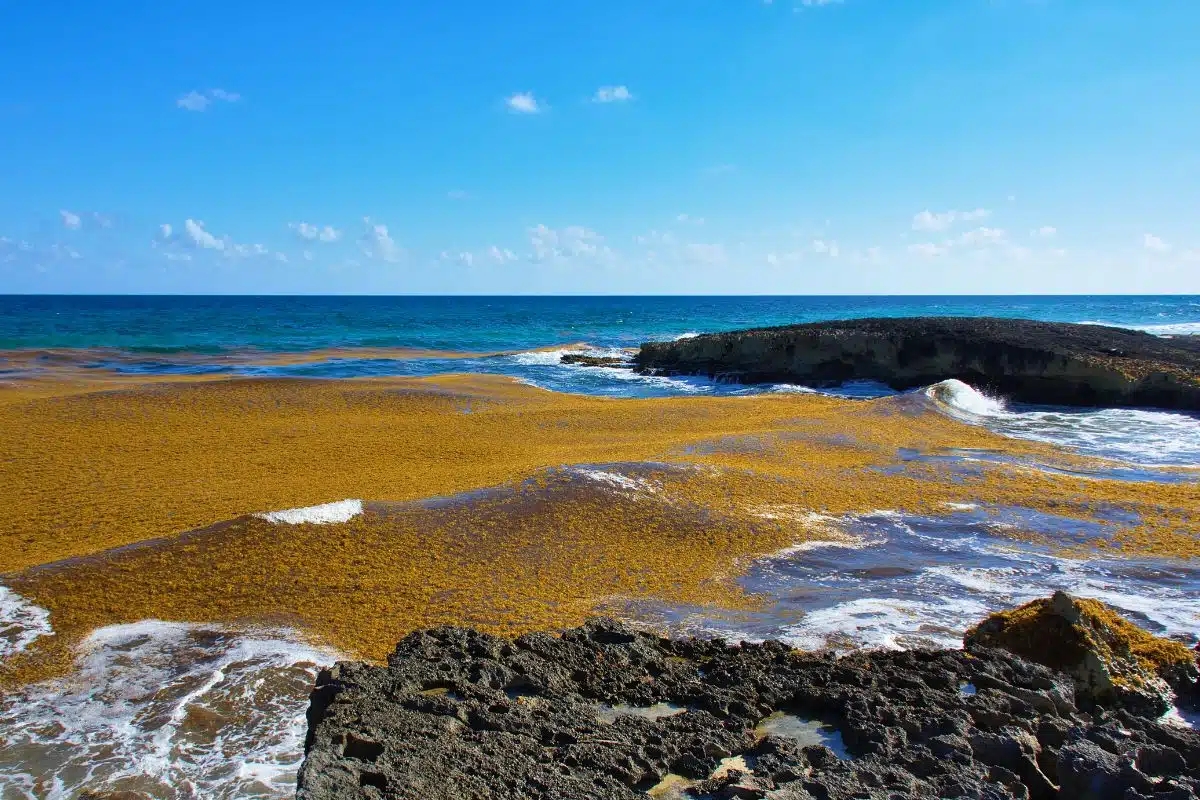Authorities are warning visitors to Florida beaches that they may find unwanted algae.
Seaweed is a nuisance to fishermen and swimmers, as it makes them more difficult.
This summer, South Florida beaches are expected to be covered in miles of algae.
We knew what was coming and we are now seeing a lot of Sargassum washed up on the Cocoa Beach Pier. The seaweed was pushed to the beach by strong onshore
Greg Pallone April 10, 2023
After a video was released showing large quantities of kelp with a foul smell floating off-shore and near Marathon’s Cocoplum Beach, it became a reality.
Sargassum is thicker near the Florida Keys because of its proximity the Gulf Stream.
Onshore currents can bring seaweed to the beach, causing unpleasant beach days. People have to walk on it and smell rotten egg odors.
The Florida Department of Health says that although seaweed does not pose a threat to humans it can still have a negative impact. Sargassum is home to small animals which can cause skin irritations and blisters.
Health experts advise against eating the algae because it can contain heavy metals like arsenic or cadmium.
Many marine animals are said to benefit from brown algae. Scientists believe that the deposits are a source of food and shelter for small invertebrates, such as shrimp, crabs and fish.
The issue must be resolved in this year, regardless of what anyone thinks.
Sargassum is a large bloom that can be seen from the space on beaches in Haulover and Hollywood.
According to Florida Atlantic University Professor Dr. Brian LaPointe the seaweed bloom measures 13 million tons and is twice as large as the United States.
He said, “It has doubled its size from December to January.”
Scientists are unsure of the cause. Scientists have studied it since 2011.
Algae is not expected to discourage many beachgoers and the beaches are still expected to be crowded.






